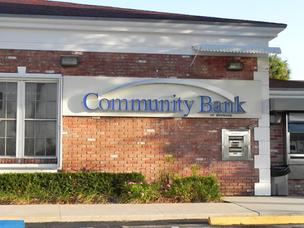 Community Banks have a critical role in keeping their local economies vibrant and growing by lending to creditworthy borrowers in their regions. They often respond with greater agility to lending requests than their national competitors because of their detailed knowledge of the needs of their customers and their close ties to the communities they serve. Such lending helps foster the economy by allowing businesses to buy new equipment, add workers or sign contracts for increased trade or services. Customer knowledge also gives community bankers a real-time understanding of customer demands and provides them with an opportunity to respond more aggressively to those demands – particularly in regard to the use of technology.
Community Banks have a critical role in keeping their local economies vibrant and growing by lending to creditworthy borrowers in their regions. They often respond with greater agility to lending requests than their national competitors because of their detailed knowledge of the needs of their customers and their close ties to the communities they serve. Such lending helps foster the economy by allowing businesses to buy new equipment, add workers or sign contracts for increased trade or services. Customer knowledge also gives community bankers a real-time understanding of customer demands and provides them with an opportunity to respond more aggressively to those demands – particularly in regard to the use of technology.
Dramatic changes within the community banking industry over the past 20 years are evident. According to the Federal Reserve’s definition of community banks (those with less than $10 billion in total consolidated assets), there were more than 10,000 community banks 20 years ago. At the end of 2012, however, there were fewer than 6,000 community banks. Over the same period, the percentage of total U.S. banking assets held by community banks fell from 50 percent to 17 percent. As stated by former Fed Chairman, Ben Bernanke, as a proponent of the traditional community bank model, “There is a real place for the customization and flexibility that community banks can exercise to meet the needs of local communities and small business customers.”
At the inaugural Federal Reserve System and Conference of State Bank Supervisors (CSBS) Community Bank Research and Policy Conference held in October, 2013, the key note was the importance of Community Banks in the financial system and in our economy. As reiterated by Federal Reserve Bank of St. Louis spokesperson, Julie L. Stackhouse, Senior Vice President, Banking Supervision, “The community banking industry has experienced challenges and ongoing consolidation; however, there is a future for community banks that have strong management teams, adhere to solid banking fundamentals, and leverage their “social capital”, or community relationships, to tailor products and services that meet the needs of customers in their local markets.”
Chartering a new Community Bank provides the opportunity for local investors to profit from high-quality services offered by a Community Bank, and strengthens the local economy through loans to customers. There is predictability to the ebb and flow of Community Bank charter activity. Every seven to ten years, since World War II, there has been a resurgence of new bank charter submissions and approvals. This is typically followed by a period during which mergers and acquisitions although leaving a gap in the community banking industry are often favorable to the bank’s shareholders.
Many astute and successful individuals have been involved in community banks as Organizers, Directors or Investors. Many of these banks have found their niche in the local markets and as a result, their shareholders benefited with annual returns between 8% and 12%. Well-capitalized Community Banks that are well-managed and strategically located will continue to prosper. In doing so, they can continue to be attractive investments, and lucrative ventures for the local economy.
If recent mergers and acquisitions within your community have led to inferior banking service, dissatisfaction by consumers and businesses, and a significant decline in economic development and financial leadership, the opportunity may exist in your community for a new bank that can provide quality products and services and attractive returns for your investors.
Series to continue with Minority-Owned Institutions (MOI) Program

